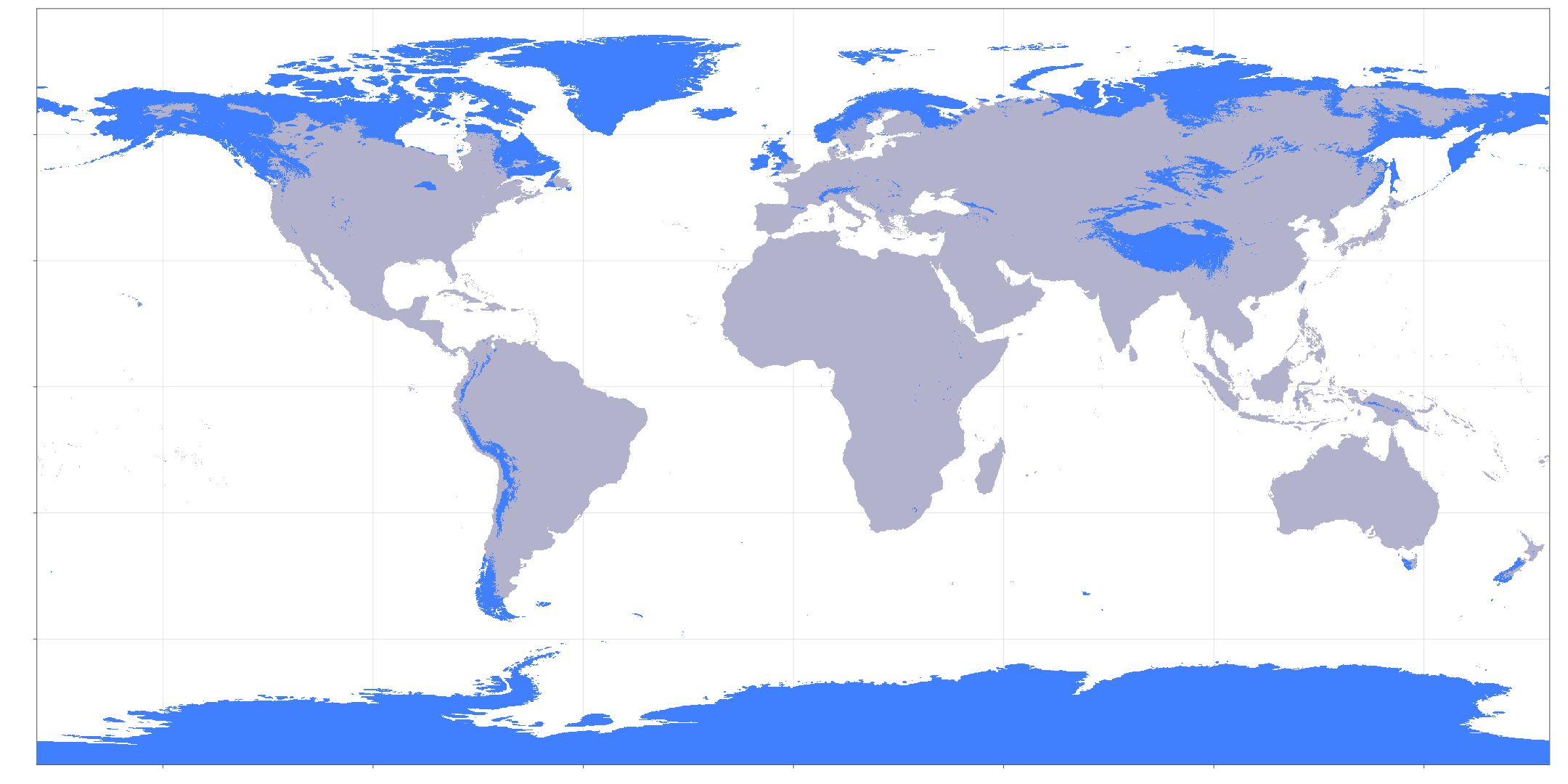Summary
People in Scotland experience some of the mildest summers in the world: under 1% of people experience cooler summers than Scots. This should not surprise anyone who has lived here!
Introduction
The Scottish Summer is famous amongst those who dislike hot weather. To all others, it is perhaps rather infamous. Is the reputation warranted? Clearly there are places like Antarctica where a drab Dundee ‘summer’ day would seem toasty — but very few people live there. What if, instead, we consider the distributions of summer temperatures that people actually experience? Living in a place with summers so mild that 99% of the world’s population experiences warmer summers than you surely must be noteworthy.
(Credit for this idea goes to a conversation between my girlfriend and her friends — thanks!)
Who Has the Coolest Summers?
Computing this is fairly straightforward given population grid data, climate grid data, and some assumptions: assign each bit of population a summer temperature by overlaying the two grids, and sort. We assume ‘summer temperature’ is the highest {monthly average temperature} over the 12 months of the year since northern and southern hemisphere summers are in antiphase.
For the population data grid I used the WorldPop dataset1 of 2020 population estimates at a 1km resolution.
For the temperature grid I used the TerraClimate2 2020 monthly mean Tmax (TerraClimate_tmax_2020.nc from this site), at a 4km resolution.
To get the grids to match I used the helpful Rasters.jl package (see code below).
Now for the main result. Try changing the slider to see how the geographical distribution of population changes as the population percentile changes.

1% of the global population have summers colder than 20.8°C
Scottish summers are unusually cold after all: 99% of the world’s population has warmer summers than the Scottish as well as the Irish and large parts of Wales, Northern England, and Cornwall/Devon. I’m actually quite surprised by Cornwall — in my mind it’s an almost-Mediterranean holiday location. Shetland is particularly cool: 99.9% of the world population experiences warmer summers.
We can plot the cumulative fraction of Earth’s population subject to summers cooler than a given temperature:

Cumulative distribution of summer temperatures
Some interesting values in table form:
| Pop. Percentile | Summer Temperature (°C) |
|---|---|
| 0.1% | 15.7 |
| 1% | 20.8 |
| 10% | 27.1 |
| 25% | 30.5 |
| 50% | 33.4 |
| 75% | 36.2 |
| 90% | 40.1 |
| 99% | 44.3 |
| 99.9% | 47.0 |
Code
(N.B. this code uses quite a lot of RAM!)
using Rasters, NCDatasets, ArchGDAL, Plots
tempdata = maximum(Raster("TerraClimate_tmax_2020.nc", key=:tmax), dims=Ti)[Ti=1]
popdata = replace_missing(Raster("ppp_2020_1km_Aggregated.tif"), 0)
popdata_r = resample(popdata, to=tempdata, method=:sum)
t_cutoff = 20.8
cutoff_pop = sum(skipmissing(popdata_r .* (tempdata.<t_cutoff)))
total_pop = sum(skipmissing(popdata_r .* (tempdata .> -100))) # correct for missing temperature data
popmap = tempdata .< t_cutoff
pctg = round(100*Float64(cutoff_pop/total_pop), sigdigits=3)
worldmap = heatmap(
popmap,
title="World, Summer <$(t_cutoff)°C ($(pctg)% of world pop.)",
legend=nothing,
)
-
Citation: WorldPop (www.worldpop.org - School of Geography and Environmental Science, University of Southampton; Department of Geography and Geosciences, University of Louisville; Departement de Geographie, Universite de Namur) and Center for International Earth Science Information Network (CIESIN), Columbia University (2018). Global High Resolution Population Denominators Project - Funded by The Bill and Melinda Gates Foundation (OPP1134076). https://dx.doi.org/10.5258/SOTON/WP00647 ↩︎
-
Citation: Abatzoglou, J. T., S. Z. Dobrowski, S. A. Parks, and K. C. Hegewisch, 2018: TerraClimate, a high-resolution global dataset of monthly climate and climatic water balance from 1958–2015. Scientific Data, 5, https://doi.org/10.1038/sdata.2017.191. ↩︎